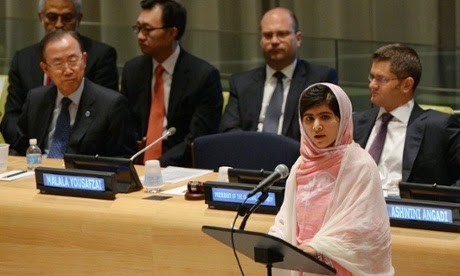 |
Phillip Hughes |
Australian team doctor Peter Brukner said in a statement released by Cricket Australia on Thursday afternoon that Hughes had died at St Vincent's Hospital.
Peter Brukner, Australia team doctor, said he never regained consciousness and
died in hospital in Sydney.
"He was not in pain before he passed and was surrounded by his family and
close friends," he said in a statement.
"As a cricket community we mourn his loss and extend our deepest
sympathies to Phillip's family and friends at this incredibly sad time.
Cricket Australia kindly asks that the privacy of the Hughes family, players
and staff be respected."
In an incident that has stunned the cricketing community in Australia and
abroad, Hughes, 25, was hit on side of the head while attempting to hook a
ball during an inter-state Sheffield Shield match at the Sydney Cricket
Ground on Tuesday.
Hughes, who was wearing a helmet, appeared to compose himself but then leant forward and collapsed face first onto the pitch. The batsman, who played 26 Tests for Australia, was taken to hospital and remained in an induced coma.
Tony Abbott, Australian Prime Minister, led tributes.
"His death is a very sad day for cricket and a heartbreaking day for his family. What happened has touched millions of Australians," he said.
"For a young life to be cut short playing our national game seems a shocking aberration. He was loved, admired and respected by his teammates and by legions of cricket fans."
Australian cricketers past and present took to Twitter to express their sorrow.
Australian cricketers have gathered at the Sydney Cricket Ground and wandered out one-by-one to pay tribute to Phillip Hughes on the pitch where he was killed.
Those seen making their way to the centre of the empty ground included Michael Clarke, the Australian captain.
The death of Hughes, a former Test batsman, has devastated Australia’s tight-knit cricketing community. In the past two days, players have been seen crying as they have come and gone from St Vincent’s hospital, where Hughes was in intensive care.
Australia has been preparing to play a test against India but it is not clear whether it will go ahead.
“The game will go on – it has to – but it is a sad loss for the game of cricket,” former Australian captain Mark Taylor told Channel Nine. “He [Hughes] was a good country lad. He was really the quintessential Australian cricketer. You don’t expect this to happen and even when he got hit, you think he will bounce back.”
Taylor expressed sympathy for Sean Abbott, who bowled the bouncer which struck Hughes.
“I hope Sean Abbott can forgive himself because the cricket community doesn’t blame him at all.”
A tribute to Hughes in Sydney's Daily Telegraph said the day "will forever be remembered as one the most sorrowful days in Australian cricket's 138-year history".
"Cricket's saddest day is upon us," wrote Robert Craddock and Peter Badel.
"For deep-seated shock and sadness it is doubtful whether any incident has caused more widespread grief than this heartbreaking tale of a strong-willed young cricketer playing an innings, expecting to see him recalled to the Test team and suddenly losing his life... The devastation of Hughes' death is deep and widespread and stretches far beyond the boundary of cricket and even sport."
Hughes, who was wearing a helmet, appeared to compose himself but then leant forward and collapsed face first onto the pitch. The batsman, who played 26 Tests for Australia, was taken to hospital and remained in an induced coma.
Tony Abbott, Australian Prime Minister, led tributes.
"His death is a very sad day for cricket and a heartbreaking day for his family. What happened has touched millions of Australians," he said.
"For a young life to be cut short playing our national game seems a shocking aberration. He was loved, admired and respected by his teammates and by legions of cricket fans."
Australian cricketers past and present took to Twitter to express their sorrow.
Australian cricketers have gathered at the Sydney Cricket Ground and wandered out one-by-one to pay tribute to Phillip Hughes on the pitch where he was killed.
Those seen making their way to the centre of the empty ground included Michael Clarke, the Australian captain.
The death of Hughes, a former Test batsman, has devastated Australia’s tight-knit cricketing community. In the past two days, players have been seen crying as they have come and gone from St Vincent’s hospital, where Hughes was in intensive care.
Australia has been preparing to play a test against India but it is not clear whether it will go ahead.
“The game will go on – it has to – but it is a sad loss for the game of cricket,” former Australian captain Mark Taylor told Channel Nine. “He [Hughes] was a good country lad. He was really the quintessential Australian cricketer. You don’t expect this to happen and even when he got hit, you think he will bounce back.”
Taylor expressed sympathy for Sean Abbott, who bowled the bouncer which struck Hughes.
“I hope Sean Abbott can forgive himself because the cricket community doesn’t blame him at all.”
A tribute to Hughes in Sydney's Daily Telegraph said the day "will forever be remembered as one the most sorrowful days in Australian cricket's 138-year history".
"Cricket's saddest day is upon us," wrote Robert Craddock and Peter Badel.
"For deep-seated shock and sadness it is doubtful whether any incident has caused more widespread grief than this heartbreaking tale of a strong-willed young cricketer playing an innings, expecting to see him recalled to the Test team and suddenly losing his life... The devastation of Hughes' death is deep and widespread and stretches far beyond the boundary of cricket and even sport."





